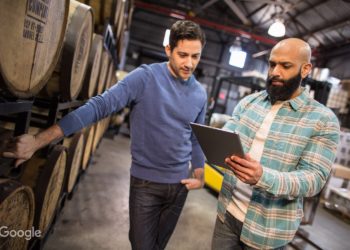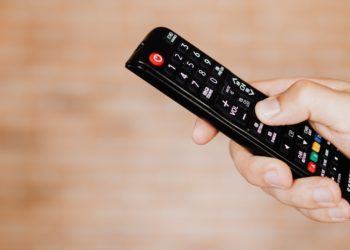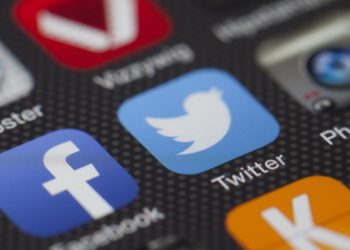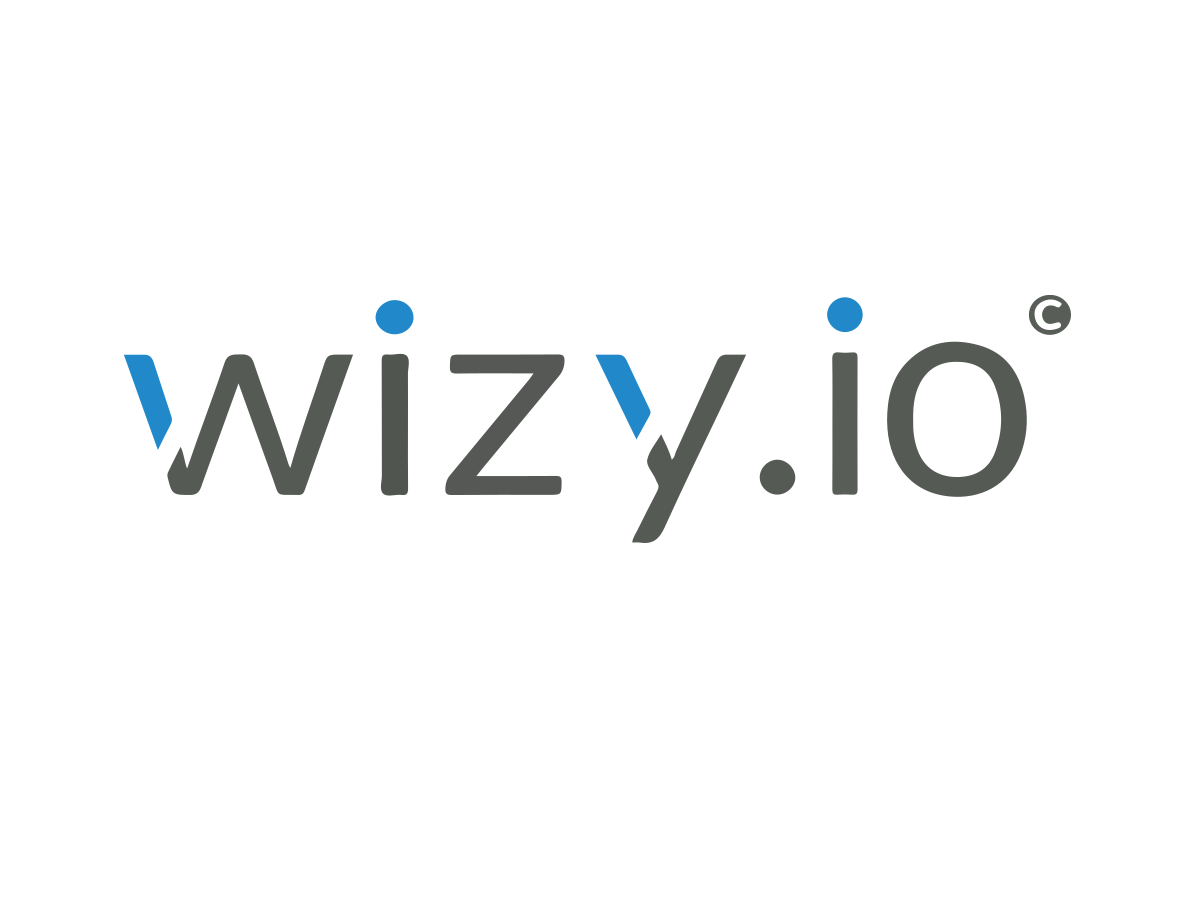Microsoft, created in 1975, was not at the origin of the first personal computer. But, with the help of IBM for the first MS/Dos PCs, and then with the creation of Windows, Microsoft has established itself as the dominant Operating System provider in the worldwide personal computer market.
This email, sent by Bill Gates on the 40th anniversary of the birth of Microsoft, refers to the ambitious goal of Microsoft in its early days:
Bill Gates: “A personal computer for every office, for every home”.
This prediction took decades to become a reality!
I remember talking to a manager about this goal and saying: “Tomorrow you will have as many PCs in your office as phones.” His immediate response was: “OK, I’ll eliminate phones!”
Today, all white-collar workers have personal computers – laptops in over 90% of cases.
On the other hand, the FLWs (Front Line Workers) remain the great forgotten ones of the Digital Transformation.
In this beginning of 2022, I propose an ambitious goal:
Louis Naugès: a smartphone for every FLW before the end of 2025.
Innovative companies, concerned about their competitiveness and the need to bring FLWs into the digital age, will have reached this goal before 2025.
In this post, I aim to provide you with a clear, complete, operational and concrete instruction manual to enable you to immediately equip all the FLWs in your company with the digital tools they want, to make them more efficient and more productive.
No one can be against this objective…
Reminder: FLW (Front Line Workers)
For those who are not familiar with the concept of FLW, Front Line Workers, I recently wrote two posts dedicated to this topic:
- Front Line Workers, the new priority of any Digital Transformation (in French).
- Digital Age – after the white collars, priority to FLW, Front Line Workers (in French).
I summarize here the key ideas.
FLWs are the front line workers, the deskless, as opposed to the white collar workers. Some key figures:
- White collar workers = 20% of the global working population.
- FLW = 80% of the world’s working population.
- Main sectors of activity with a majority of FLWs: industry, transport, logistics, agriculture, hospitals, hotels…
- In advanced economies, USA, Europe… the percentage of FLW is lower, as shown in this study by OMDIA in 2020. It is between 65 and 70%, still largely in the majority.
Current situation: welcome to the Shadow IT of FLW
A smartphone for every FLW: it’s already a reality in 2022!
The problem is that in most cases, these are personal smartphones, primarily for personal use and sometimes also for professional use.
This is one of the most striking examples of the gap that exists between the speed of introduction of digital solutions in the general public and in companies.
In a large French retail group I was recently talking to, I was told about a typical “Shadow IT” case. In the stores, FLWs created Whatsapp groups with 250 people, the maximum allowed by this application, to exchange photos related to their professional activities. I will explain, at the end of this post, how to transform this FLW shadow IT into an official, much more powerful application, using WizyVision’s Frontspace solution.
Shadow IT: it has always existed and has exploded with the arrival of SaaS solutions (Software as a Service) since the early 2000s.
A survey conducted by the security solutions provider Netskope showed that the number of SaaS solutions in use is ten times higher than that estimated by IT teams.
By refusing to provide FLWs with enterprise digital tools, companies run the risk of repeating the same mistakes made with white-collar workers and seeing more FLW shadow digital use cases.
White collar and FLW: different digital tools
The logical first instinct of companies that decide to equip their FLWs with digital tools is to offer them the same solutions that have proven successful with white collar workers. I personally made this mistake in the early 2010s when I was advocating for giving all FLWs an email address.
It is clear today that this was a bad idea: FLWs need different digital tools:
- Text and forms are not my cup of tea.
- E-mail, no thanks.
- A laptop: are you kidding?
In keeping with an approach I have advocated for decades, I will clearly separate:
- Infrastructure solutions, in this case, access objects and networks.
- The applications, which bring value to FLW and which rely on these infrastructures.
For networks serving FLWs, even more so than for white collar workers, the only possible answers are wireless networks, WiFi, 4G and 5G. In the remainder of this post, I make the reasonable assumption that wireless networks are available for FLWs.
On the access objects, the studies we conducted with WizyVision confirmed major differences, summarized in this table.
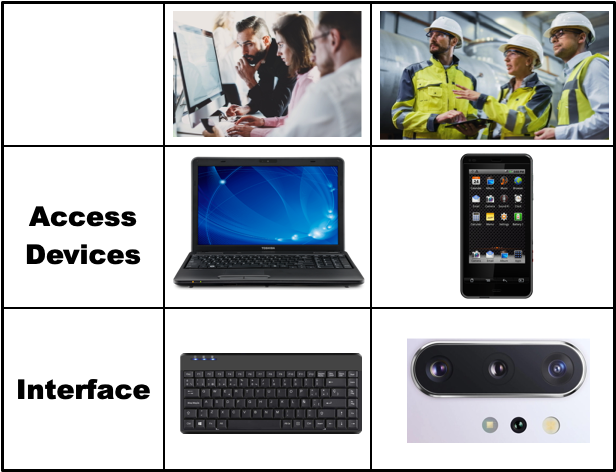
- White-collar workers have mastered personal computers for decades. They are also very comfortable with the keyboard-text-mouse interface, which allows them to create tables, presentations and documents.
- For FLWs, desktop computers and keyboards will never be their favorite tools. They are, however, all capable of :
- Using a smartphone.
- Taking pictures.
- Adding a voice comment that will be automatically translated into text and attached to a photo.
This confirms the hypothesis formulated at the beginning of this post, which proposes:
A smartphone for every FLW by the end of 2025.
How to choose a smartphone for FLW? This is the subject of the next paragraph.
Equipping FLW with a smartphone: main options
I will focus my analysis on Android smartphones, which equip or will equip the vast majority of FLWs. There are few Apple smartphones to be found in factories, among transporters or among workers on a construction site.
Companies must answer two questions:
- Which Android smartphone to choose?
- What are the smartphone ownership options, between corporate and FLW?
I’m going to talk primarily about smartphones; in some cases, an Android tablet will be more effective, but the following applies to both smartphones and tablets.
Choosing an Android smartphone
You have to get into the technical side of things to understand the options offered for the Android operating system.
1 – AOSP : Android Open Source Project
This is the native, “Open Source” version of Android. It is the one that Huawei must now use after the U.S. government banned access to Google’s “Services”.
This basic version does not provide access to essential Google services, such as the Google Play Store and geolocation with Google Maps. It should not be chosen by European companies to equip FLW.
2 – GMS: Google Mobile Services
GMS is the version of Android installed on almost all smartphones sold outside China. This document explains in detail the features and benefits of GMS.
To be GMS certified, a smartphone must pass a large number of tests. It’s Google’s answer to Apple. GMS allows it to better control the many vendors and hundreds of Android models available, assuring buyers that they all have the same basic features.
This table lists the main features available on a GMS smartphone.
Key points to remember about the benefits of GMS:
- Provides access to Google features and applications.
- Provides access to Google APIs.
- Allows you to use the Google Play Store.
To equip FLWs, the GMS version of Android is the obvious choice.
Among all the GMS smartphones, the Android teams have established a selection of models adapted to the expectations of companies, the “Android Enterprise” offers.
Zero Touch Option.
I strongly recommend that companies choose smartphones that have the Zero Touch option. It makes it easier to manage fleets of devices by allowing automatic enrollment of OTA (Over the Air) smartphones into the chosen EMM to manage users and applications without the need to physically access the devices.
The second question is: standard smartphone or rugged version.
1 – Rugged smartphones are adapted to conditions of use that require more resistant smartphones.
The main features sought by companies:
- Batteries that can be replaced. This is by far the most important demand.
- Drop resistance, water resistance.
- Fast barcode or QR code readers.
- ATEX, for environments where the risk of explosion is important.
Prices for these rugged smartphones are in the range of €500 to €2,000. Companies are increasingly asking for rugged smartphones at reasonable prices, less than 1 000 €.
The main suppliers of rugged Android smartphones are Zebra, Honeywell, Samsung…
I did a search on the Android Enterprise website for rugged smartphones available in Europe, and found 83 different models. Every company will find the right ones for different FLW profiles.
2 – Standard smartphones, which can also be used by white collar workers (Knowledge Workers).
Not every FLW needs a ruggedized Android smartphone. There are excellent non-rugged GMS smartphones that meet the expectations of many FLWs.
These standard smartphones have two advantages:
- Lower prices, starting at around €300.
- The offer is more abundant, with 241 Android Enterprise models available in Europe.
Options for owning a business smartphone by a FLW
There are three possible approaches to equipping a FLW with a smartphone:
- Use two separate smartphones, one professional and one personal.
- COPE: Company Owned, Personally Enabled. The company provides a smartphone to the FLW and authorizes them to use it personally.
- BYOD: Bring Your Own Device. The FLW owns the smartphone and also uses it officially for business purposes.
Each of these three approaches is possible. Above all, organizational, cultural and human considerations will guide a company’s choices.
This article clearly presents these options.
Two separate smartphones

This approach is the easiest to implement.
There are many situations where this is the only reasonable option.
Some examples include:
- Secure environment: the smartphone should not leave the work area.
- Rugged smartphones: not suitable for personal use.
- Non-personal business smartphones, self-service, shared by several FLWs.
- Equips FLWs for short periods of time: seasonal workers, temporary workers, subcontractors…
One smartphone, for business and personal use.

Before presenting these two options, it is important to understand what a modern Android smartphone can do today.
Creation of independent “containers”: it is possible to create two totally independent spaces on the same smartphone:
- A Work profile container.
- A personal container, “Personal profile”.
- Each of these two containers is independent, in terms of applications and data. If a FLW uses Google Maps for work and personal use, there will be two versions of Google Maps installed.
- The FLW can be allowed to turn off the work container, for example during the weekend, to avoid receiving communications from his company.
COPE approach. It is the company that takes the lead and chooses the smartphones that will be offered to FLWs. It can also control the rules of use and which telecom operators will be selected.
BYOD approach. It is the FLW employee who makes the choice of the Android smartphone he will accept to share with his company. There is no guarantee that they will all be “Android Enterprise”, and therefore easy to manage. That’s why there’s a question mark over EMM. Only Android Enterprise phones allow it.
I see that the COPE approach is chosen in priority by innovative companies that have equipped FLWs with a single smartphone, professional and personal. We’ll see two examples later in this post.
Essential: an EMM, Enterprise Mobile Management
Whatever approach you choose, it is not reasonable to equip a FLW with a smartphone for business use without installing EMM software(Enterprise Mobile Management), which has two main families of functions:
- Secure the smartphone. Among the essential functions are:
- Mandatory use of a screen lock.
- Remote wipe in case of theft or loss.
- Control of WiFi networks to which the smartphone can connect.
- Native data encryption.
- Limits of use: define the geographical area in which the smartphone is allowed to operate.
- Make a “factory reset” impossible.
- Managing the smartphone and applications:
- Ensure that only professionally authorized applications are installed in the work profile.
- Prohibit the installation of any application that is not from the Google Play Store.
- Centrally manage the fleet of FLW smartphones.
In the field of EMM, too, the offer is abundant. A search on the Android Enterprise site, selecting the most important features, offers 31 solutions.
There are solutions that have existed for many years, such as SOTI, VMWare Workspace or Mobileiron. Among the most recent ones, I can mention one of the most modern and competitive, WizyEMM, proposed by the company Wizy.io. (of which I am one of the founders!)
Use Case 1: La Poste in France
La Poste Group is a pioneer in equipping its field employees with smartphones. The Facteo project started almost 10 years ago, in 2012.
Today, more than 70,000 postmen are equipped with a standard Android smartphone.
Priority has been given to business applications, such as assistance to the elderly, to offset the continued decline in paper mail, which was initially the main job of mail carriers.
The COPE approach was chosen: the letter carrier has a waterproof personal environment on the smartphone provided by the company. The fact that La Poste is also a cell phone operator facilitated the provision of access to a mobile network.
It’s also good to see that La Poste was present at CES in Las Vegas in 2020 to promote its innovative digital solutions. It took the opportunity to accompany several startups at the show.
The human aspect of the letter carrier’s job, especially in rural areas, will be highlighted in an exhibition of the best photos taken by letter carriers. This exhibition will be visible in 2022 at the Grand Poste du Louvre in Paris. This is a very nice initiative, bravo!
Use Case 2: Walmart in the US
Walmart, little known in Europe, is a retailer whose 70% of revenues are made in the United States. It is also the largest private employer in the world with 2.2 million employees.
In 2021, Walmart launched a major program to equip its “Associates” with smartphones, the FLWs paid by the hour at Walmart. These are primarily the people in the supermarkets and hypermarkets.
The first wave of investments in 2021 only concerns 50% of this population. That still represents… 740,000 Samsung Android smartphones!
In this 20-minute webinar, hosted by Android Enterprise in late 2021, two Walmart managers present this project, the main objectives and the first results obtained. Me@Walmart is the name of the mobile application that brings together all the features that Associates have access to.
As with the La Poste Group, a COPE approach has been chosen. Walmart associates can freely use their work smartphones for personal use. Even in the United States, the digital divide exists and one of Walmart’s objectives is to reduce, somewhat, this divide.
Equipping a FLW with a smartphone: budgetary elements
It is not reasonable to propose to leaders to invest for FLW without giving them budgetary elements. Like all digital infrastructures, a smartphone for FLW costs and… doesn’t make money. The benefits come from usage.
This table summarizes the estimated costs of two solutions:
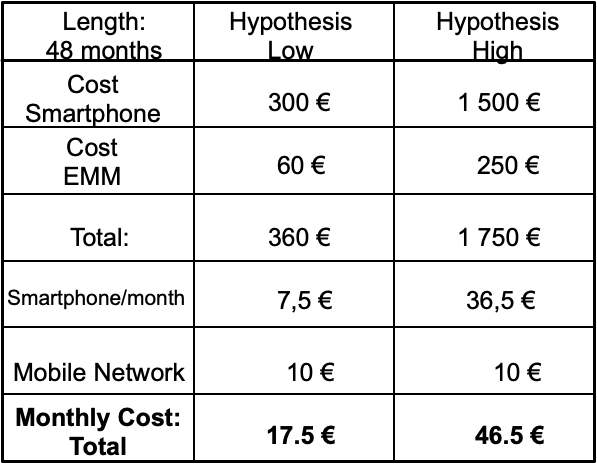
- A low hypothesis, with a normal smartphone.
- A high hypothesis, with a high-end rugged smartphone.
- In both cases, the estimated lifetime of the smartphone is 4 years.
The full monthly cost of providing a smartphone for FLW, including the smartphone, EMM and a subscription to a wireless network is in the range of :
17.5 € à 46.5 €.
Each company will make its own calculations, but I think that in most cases it will be in this cost range.
A smartphone, what for? What “Frontic” uses for FLW
For a long time now, companies have been equipping FLWs with smartphones as a priority in professions for which it was an indispensable tool, used several hours a day, such as :
- Warehouse logistics.
- Meter readings.
- Maintenance of equipment at customers’ sites.
- Carriers like Chronopost or DHL.
We remained in very specialized use cases, and the vast majority of FLWs were not concerned by these tools, which explains the current deficit of digital equipment of FLWs in companies.
In the white-collar world, it was the office uses that led to the commoditization of personal computers and web tools such as messaging or video conferencing.
For the universal uses of FLWs, I propose to use the word “Frontic”, hoping it will have the same success as the word “Bureautique” that I created… A long time ago.
The number of universal office tools is very small. I assume that the number of frontic tools will be the same.
I have chosen to illustrate the concept of “Frontic” solutions with two SaaS tools:
- we advocacy
- WizyVision
First example of a “Frontic” solution: we advocacy
we advocacy is a young French company that offers an innovative and, for the moment, unique solution: the ability for a company to communicate “Top Down” to employees who don’t have an email address. we advocacy has other features, but I’m only interested here in its contribution to FLW.
The we advocacy mobile application is offered to all FLWs for their personal or professional smartphone; they have the right to refuse to install or activate it.
If the FLW agrees to use it, this application works exactly like classic SMS.
we advocacy allows companies to:
- Communicate the same information to FLW and white collar workers:
- In the form of texts, images or videos.
- Important events (training).
- Messages from management.
- New product launches.
- Company newsletter.
- …
- It can be used by several departments, in particular the IT department (incident alerts, scheduled maintenance) and HR (job offers, invitations for HR procedures).
- It also allows to organize simple, regular surveys, which allow to better follow the feelings of the FLW over time.
- To give a site manager the possibility to communicate directly with his whole team, in real time.
The company Colas Rail uses the we advocacy application; these two examples are related to the life on construction sites and information about the COVID-19 pandemic.
During my discussions with the founders of we advocacy, they told me what the most important benefits reported by client companies were:
- Increases FLWs’ sense of belonging to the company.
- Improves employer brand, an important issue for FLWs who change companies often.
- Very easy to deploy and use: no negative feedback, no need for training.
Among the difficulties that must be overcome, one of the main ones often remains the “distrust” of the employer, hence the importance of giving the FLW the choice to use it or not.
Second example of a “Frontic” solution: Frontspace from WizyVision
WizyVision was built on one of the assumptions presented at the beginning of this post: the image will become the dominant interface for FLW.
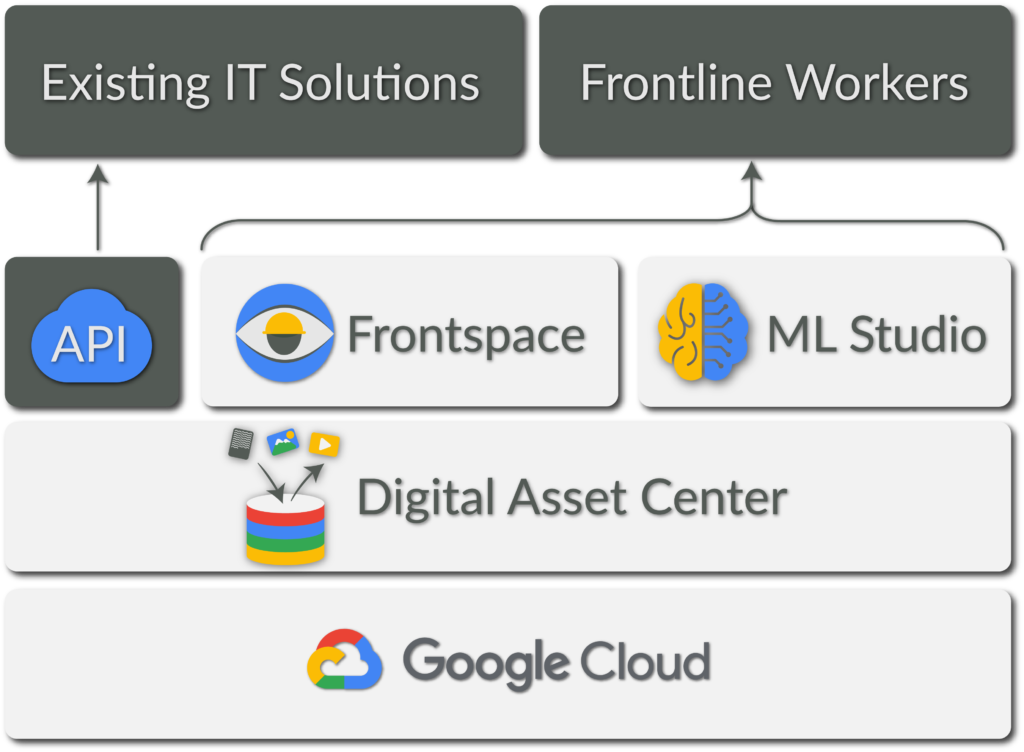
Invisible to the FLW but essential, at the heart of WizyVision’s offer is a professional image database, DAC, Digital Asset Center.
On the FLW smartphone, the mobile app is Frontspace, which comes with several power levels:
- A basic version, to take pictures, share them and save them in the DAC database. This is the “Klik&Share” option.
- A more powerful version, which allows to develop, in “No Code”, light processes built around the image. It is possible to use standard AI functions such as OCR and standard object recognition.
- The FLW can also activate the “voice to text” function and add a voice comment to the pictures they take.
- With ML Studio, you can build, also in “No Code”, specific business object recognition models.
Frontspace is a 100% universal “frontic” solution: the potential use cases are very varied, in all sectors of activity that employ FLW.
To illustrate the benefits of the Frontspace solution, I return to the example of the shadow IT in distribution, presented at the beginning of this post.

1 – In the column “Shadow IT” :
- The smartphone used is the FLW employee’s, unsecured and unmanaged.
- The application used to share photos is WhatsApp :
- This is a “poor” image. All metadata, such as geolocation and timestamp, is lost.
- Sharing the image within the company is impossible, outside the WhatsApp group.
- A photo, related to a professional activity, can be freely shared by all the collaborators of the WhatsApp group, outside the company, without any possible control.
2 – In the IT column Managed by the company:
- The smartphone is secured and managed, whether it is a dedicated smartphone or one shared in COPE mode. In both cases, an EMM is installed to guarantee this security and management.
- With the Frontspace application:
- All the information of the photo is preserved, all the metadata is available, such as :
- Geolocation.
- Timestamp.
- Reading of all texts contained in the photo.
- Reading of any barcodes or QR codes.
- Recognition of objects.
- …
- All photos are stored in the DAC, secured and accessible to everyone in the company according to the access rights assigned to them.
- All the information of the photo is preserved, all the metadata is available, such as :
This simple example illustrates the great potential of a professional front-end solution like Frontspace for… all FLW employees for whom images and photos are of great value in their activities.
Small summary on the frontic uses for FLW
The first office automation tools for white-collar workers were reserved for specialized profiles: word processing hardware and software were used by typists and secretaries.
The arrival of spreadsheets on personal computers and email opened up office automation to all white-collar workers, including executives.
I predict that the same phenomenon will repeat itself for FLWs. After the first business applications reserved for professionals such as Chronopost drivers, the arrival of front-end solutions such as We advocacy or WizyVision will gradually allow 100% of FLWs to access universal digital uses, regardless of their business.
That’s 2,700 million FLWs worldwide to equip!
In my recent post on the future of IT in Europe (in French), I identified FLW equipment as one of the seven “DC2Es” (Digital Commando of Excellence in Europe), areas where Europe could still play an important role in the global digital industry.
we advocacy, WizyVision and WizyEMM are SaaS solutions that can be used by FLWs worldwide. This is already the case for WizyEMM and WizyVision, with customers on 5 continents.
Yes, European IT has a bright future, if we choose our battles well!
Reconciling FLW equipment and digital frugality
Two smartphones per person is very bad for the planet!
I’ve written several posts on digital frugality, including one on access objects (in French).
The planet-relevant information on the subject of equipping FLWs with a smartphone is related to energy consumption during the construction and use phases.
The figures are clear: if I keep a smartphone for 3 years:
- ¾ of the energy is related to its initial manufacture.
- Only ¼ is related to its use.
Looking back at the different options for equipping a FLW, the two-smartphone solution is the worst for the planet because it adds ¾ of energy consumption for the second smartphone, with the uses remaining the same. We go from “1” to 1.75″ energy consumption, almost a doubling.
For companies and employees concerned about the future of the planet, the two reasonable options are:
- Two smartphones in the only cases where it is essential, as we have seen previously.
- In all other situations, the COPE approach is to be preferred. This means overcoming the reluctance of a FLW to carry his or her personal uses on a company-owned smartphone. I am convinced that a clear explanation of the benefits to the planet of a COPE solution will break down much of the resistance of FLWs.
Summary
One smartphone per FLW will become the norm in all companies, more or less quickly.
This is an exciting project, which I encourage you to start, immediately:
- High human added value, for FLWs.
- High added value efficiency, for the companies.
- High profitability for companies.
- Dozens of possible use cases, immediately, in 2022.
One day, all FLWs in your company will be equipped with a smartphone for professional use, that’s a given. Why wait?





